537284
[2-(Methacryloyloxy)ethyl]dimethyl-(3-sulfopropyl)ammonium hydroxide
95%
Sinônimo(s):
DMAPS, 2-(N-3-Sulfopropyl-N,N-dimethyl ammonium)ethyl methacrylate, N-(3-Sulfopropyl)-N-(methacryloxyethyl)-N,N-dimethylammonium betaine
Faça loginpara ver os preços organizacionais e de contrato
About This Item
Fórmula linear:
H2C=C(CH3)CO2CH2CH2N(CH3)2(CH2)3SO3
Número CAS:
Peso molecular:
279.35
Número CE:
Número MDL:
Código UNSPSC:
12162002
ID de substância PubChem:
NACRES:
NA.23
Produtos recomendados
Ensaio
95%
pf
150-155 °C (lit.)
cadeia de caracteres SMILES
CC(=C)C(=O)OCC[N+](C)(C)CCCS([O-])(=O)=O
InChI
1S/C11H21NO5S/c1-10(2)11(13)17-8-7-12(3,4)6-5-9-18(14,15)16/h1,5-9H2,2-4H3
chave InChI
BCAIDFOKQCVACE-UHFFFAOYSA-N
Categorias relacionadas
Descrição geral
[2-(Methacryloyloxy)ethyl]dimethyl-(3-sulfopropyl)ammonium hydroxide (DMAPS) is a hygroscopic, zwitterionic monomer used in the synthesis of polysulfobetaines. Polysulfobetaines are electrically neutral polymers that contain both cationic and anionic groups within a single monomer unit and feature interesting properties such as antielectrolyte behavior in aqueous salt solutions, biocompatibility, and hemocompatibility. Based upon these properties, polysulfobetaines are useful in many biomedical applications such as drug delivery and drug formulation.
Aplicação
Due to its hygroscopic nature, [2-(methacryloyloxy)ethyl]dimethyl-(3-sulfopropyl)ammonium hydroxide (DMAPS) can contain up to one molecule of water per monomer unit. This material should be stored in a cool, dry place and depending on the reaction conditions, water may need to be removed prior to polymerization.
Código de classe de armazenamento
11 - Combustible Solids
Classe de risco de água (WGK)
WGK 1
Ponto de fulgor (°F)
Not applicable
Ponto de fulgor (°C)
Not applicable
Equipamento de proteção individual
dust mask type N95 (US), Eyeshields, Gloves
Escolha uma das versões mais recentes:
Já possui este produto?
Encontre a documentação dos produtos que você adquiriu recentemente na biblioteca de documentos.
Os clientes também visualizaram
Chung-Man Lim et al.
Acta biomaterialia, 85, 180-191 (2018-12-26)
To overcome the drawbacks of the UV grafting method, an alternative, thermal grafting process is suggested. The uniform and geometry-independent grafting of zwitterionic polymers on curved cross-linked polyethylene (CLPE), which is used in artificial hip joints, surface was successfully achieved.
The direct synthesis of sulfobetaine-containing amphiphilic block copolymers and their self-assembly behavior.
Doncom KEB, et al.
Eur. Polymer J., 87, 497-507 (2017)
Jiang Wu et al.
Acta biomaterialia, 71, 293-305 (2018-03-15)
Skin wound healing is a still long-history challenging problem and impeded by the foreign-body reaction including severe inflammation response, poor neovascularization, incomplete re-epithelialization and defective ECM remodeling. Development of biocompatible polymers, in combination with specific drugs or growth factors, has
Cátia G Alves et al.
International journal of pharmaceutics, 582, 119346-119346 (2020-04-22)
New insights about nanomaterials' biodistribution revealed their ability to achieve tumor accumulation by taking advantage from the dynamic vents occurring in tumor's vasculature. This paradigm-shift emphasizes the importance of extending nanomaterials' blood circulation time to enhance their tumor uptake. The
Ho Joon Kwon et al.
Acta biomaterialia, 61, 169-179 (2017-08-08)
Introducing antifouling property to biomaterial surfaces has been considered an effective method for preventing the failure of implanted devices. In order to achieve this, the immobilization of zwitterions on biomaterial surfaces has been proven to be an excellent way of
Nossa equipe de cientistas tem experiência em todas as áreas de pesquisa, incluindo Life Sciences, ciência de materiais, síntese química, cromatografia, química analítica e muitas outras.
Entre em contato com a assistência técnica
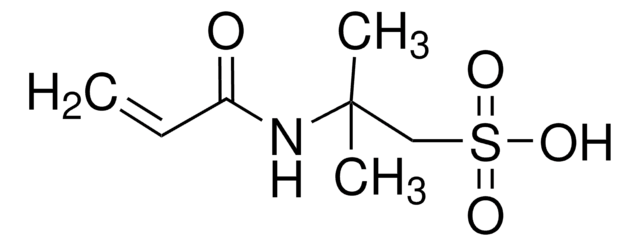
![[2-(Methacryloyloxy)ethyl]trimethylammonium chloride solution 75 wt. % in H2O](/deepweb/assets/sigmaaldrich/product/structures/316/612/66b0f4cf-d060-427d-b4f5-e8fab3e5cffe/640/66b0f4cf-d060-427d-b4f5-e8fab3e5cffe.png)
![[2-(Acryloyloxy)ethyl]trimethylammonium chloride solution 80 wt. % in H2O, contains 600 ppm monomethyl ether hydroquinone as inhibitor](/deepweb/assets/sigmaaldrich/product/structures/393/326/f7e19585-5431-4220-81b5-f458de6d63d0/640/f7e19585-5431-4220-81b5-f458de6d63d0.png)

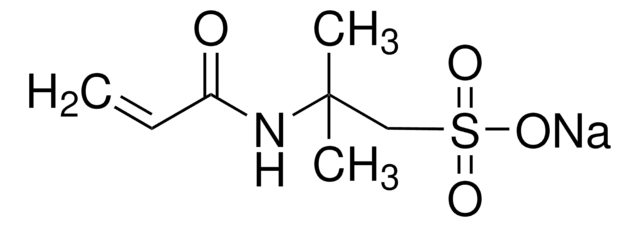
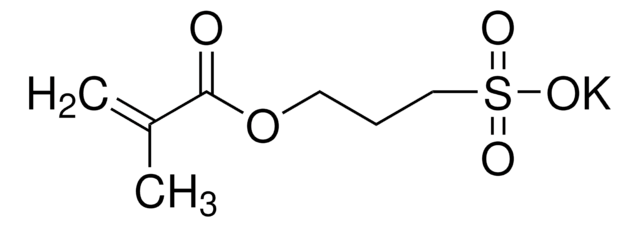


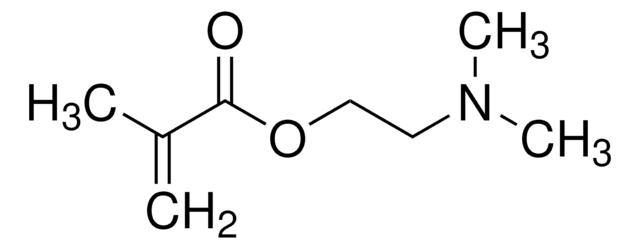
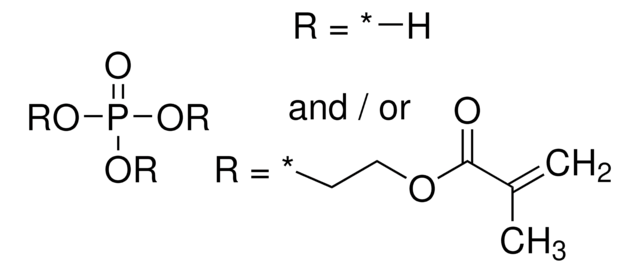
![N-[3-(Dimethylamino)propyl]methacrylamide 99%, contains MEHQ as inhibitor](/deepweb/assets/sigmaaldrich/product/structures/295/145/6b4aae15-7cb5-4b7b-9c06-8e6d24e50951/640/6b4aae15-7cb5-4b7b-9c06-8e6d24e50951.png)